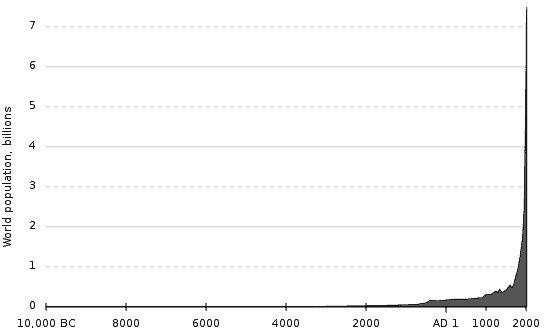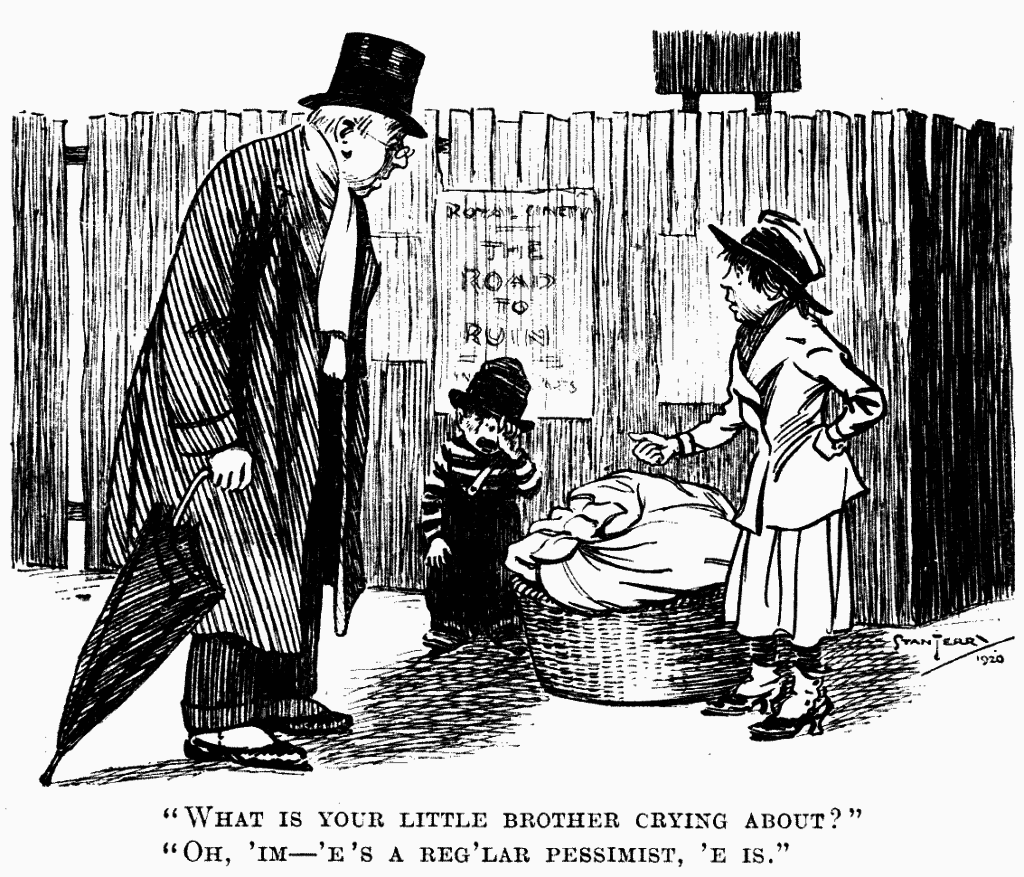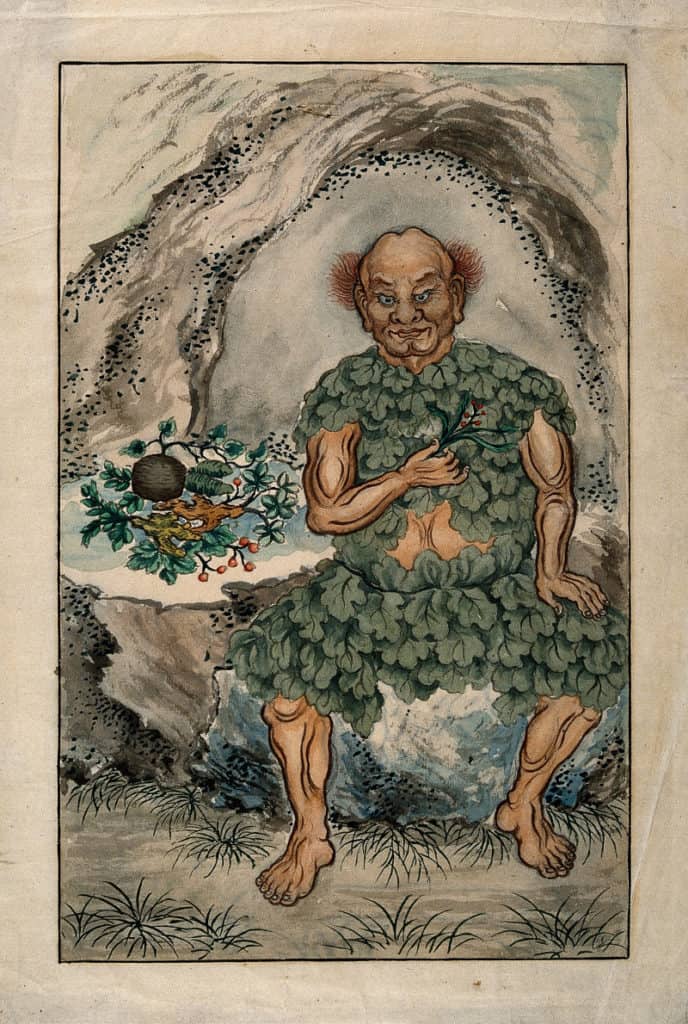
Introduction: Our Great Problem
We all love babies. Babies are cute. We all love healthy, happy babies. We do not want babies to starve or die of dehydration or be harmed by violence. It is not the cheeriest topic of discussion, but our planet is not infinite, it is finite, which means that it has limited resources like clean water, food and loving parents with a safe home.
Over 360,000 new babies are added to the world every day. In a world of short supply, where almost half the world lives in poverty, about 22,000 children die of poverty each day.[1] At the risk of sounding rational and realistic, as a responsible person, I must say it is time to get a grip on our excessive population growth.
Human overpopulation means that the number of humans in a particular territory, whether it be a country or the entire earth, cannot be sustained by the resources produced within that location. It can imply overcrowding due to factors such as high birthrate, low mortality rate, or immigration. It can also be caused by depletion of nonrenewable resources and degradation of the natural environment.
Overpopulation has a negative impact on many facets of life. The most obvious and pressing considerations are: the environment, space, clean water, food supply, medical resources, mental health, crime and various types of societal conflict.[2]
Population growth exponentially increases the amount of CO2 in the atmosphere, the main cause of global warming. It increases air, water, soil and noise pollution, as well as consumption of resources like water, food, and mineral reserves like metals and fossil fuels. It speeds up the extinction of species, reducing biodiversity, by diminishing habitats like tropical forests and coral reefs.[3]
A large and growing labor pool means that owners can offer low wages, which guts the middle class and widens the economic divide between the haves and the have-nots. This causes higher crime rates, undermines education, and forces young women into prostitution to survive. The poor get less access to food and medicine, and there are increasing levels of starvation, sickness and disease.
This scenario is not a theory; it is played out in underdeveloped countries every day, and no nation is immune to these dynamics. The present declining quality of life of the working class in the United States of America gives the perfect example of this process.[4][5][6]
The world is never short of big problems that need attention and solutions. War, violence, oppression, corruption, poverty, human trafficking, drug addiction, racism, sexism, intolerance, global warming, pollution, class warfare… and the list goes on.
One chief purpose of the online media is to inform and educate the public about problems in the world, because an issue that is unknown cannot be solved. That is why it is important to spread the truth about human overpopulation, a situation that exacerbates almost every trouble that burdens us, and as such, is arguably the world’s most serious problem.
[1] http://www.globalissues.org/article/26/poverty-facts-and-stats
[2] http://bigthink.com/scotty-hendricks/why-overpopulation-is-more-than-just-a-material-problem
[3] http://wwf.panda.org/about_our_earth/all_publications/lpr_2016/
[4] https://qz.com/1005068/the-upper-middle-class-is-the-new-middle-class/
[5] http://www.pewglobal.org/2015/07/08/a-global-middle-class-is-more-promise-than-reality/
[6] https://www.theatlantic.com/magazine/archive/2016/05/my-secret-shame/476415/


How We Got Here
Human ancestors with traits like modern humans evolved from earlier species about 300,000 years ago.[1] By 10,000 BCE Upper Paleolithic people populated the world. Natufian culture in the Levant began to populate villages with up to fifty huts and large cemeteries. Grain was harvested in quantity with the reaping knife, ground with the quern, and pulverized with the pestle and mortar. Beans and vegetables were cultivated. Rice was domesticated in China.
The world also saw the first domestication of sheep, cattle and swine. Replacing hunting and gathering, agriculture became the primary source of food, and the key factor in the rise of civilization.
Urban overcrowding was an issue as far back as the sixth century BCE. In ancient China the revered philosopher Confucius advised the government to control the balance between land and the rural population with forced migration.
To maintain a powerful army, the warlike Spartans of ancient Greece punished celibacy and promoted marriage and procreation. Both Spartans and Athenians controlled their populations, with a concern for perceived quality, by ending the lives of unwanted offspring.

The Greek philosopher Plato, the disciple of Socrates, founder of the Academy in Athens, and teacher of Aristotle, showed due regard for the size and quality of the city-state. In Book Five of his Laws[2] he suggested that each citizen must have enough property to provide for the good life. The number of citizens must be limited to 5040. Number of offspring must be regulated so the children would not fall into poverty.
Plato suggested that inheritance would fall to the favorite child and the other children should be given to citizens without progeny. He suggested the government give prizes to parents when the city-state needed growth, and when population reached a surplus, the excess would be removed to colonies.
Aristotle also discusses population size of the city-state in his Politics. He likewise considers the proper division of territory among citizens, as well as an allotment for public land, measured out for the good life. The citizen should have enough land to be able to provide for himself and his family, as poverty causes crime, and overpopulation would undermine this orderly economy.
Aristotle warns that in an excessive population the citizens would not know one another’s characters and thus could not dispense justice or elect good public officials. He was concerned that foreigners and immigrants might disrupt the rights of citizenship.[3]
The Christian author Tertullian (c. 155 – c. 240 CE) from Carthage in the Roman province of Africa is known as the founder of Western theology. In his time there were about 200 million people on the earth and he was concerned that the world was overpopulated. In De Anima (On the Soul) he complained, “Our numbers are burdensome to the world, which can hardly support us.”
The Greek Saint Jerome (c. 347 – 420), creator of the Latin Vulgate edition of the Bible, wrote in his Against Helvidius, that “The world is already full, and the population too large for the soil.”
[1] https://en.wikipedia.org/wiki/Timeline_of_human_evolution
[2] https://www.gutenberg.org/files/1750/1750-h/1750-h.htm#link2H_4_0008
[3] http://www.preservearticles.com/2011112818011/essay-on-population-theories-according-to-the-early-chinese-and-greek-thinkers.html

Human Bodies as Wealth
Since our ancient origins human population has seen a steady increase, besides a pause during the Great Plague around 1350, when it dropped up to 200 million. Mercantilists during the sixteenth to eighteenth centuries saw population in terms of wealth and power, where a large population equaled wealth in the form of labor, markets and an army.[1]
This trend seems to hold even today in capitalist society, as government representatives and journalists wring their hands about countries with low fertility rates. Likewise, they still measure economic success only in terms of Gross Domestic Product (GDP) and fail to consider individual quality of life.
The Industrial Revolution began in Great Britain around 1760 and lasted into the early nineteenth century. During this time science and technology have seen advances in chemistry and metallurgy, and invented new machines of production, like those using steam power.
Meanwhile, economic philosophy, most notably Adam Smith’s Wealth of Nations, developed the factory system with its division of labor, increasing the speed and output of production. Scientific advances reduced death rates by improving sanitation, food production and distribution, medicine (especially vaccines and antibiotics) and quality of life.
Thomas Malthus (1766 – 1834) was an English cleric and author known mainly for his views on population growth, as delineated in his book, An Essay on the Principle of Population. Malthus disagreed with the idea that humanity could be perfected and eventually build a utopia. He concluded that population would always outgrow food resources, forever leaving a portion of the human population hungry and impoverished.
Malthus considered negative and positive controls on human population to moderate the problem. His work influenced nineteenth century British naturalists Alfred Wallace and Charles Darwin in their theories of natural selection by survival of the fittest.[2]
Overall quality of life, and therefore population growth, has made the greatest strides since the Second World War, mostly because of improvements in food production and distribution. Agriculture has been enhanced with new varieties of seed, innovative chemical fertilizers and pesticides, and innovative machinery. Horticulture has expanded into large-scale production farm factories of poultry, beef and pork.
The causes of recent overpopulation are also attributable to medical advances, sanitation, improved housing, and access to clean water.
20 Images That Show How Insanely Crowded China Has Become – B. I.
The couple Paul R. Ehrlich, a Stanford professor, and his wife, Anne Ehrlich, wrote The Population Bomb in 1968 to warn of upcoming perils of human overpopulation. It was successful in raising some awareness on the issue.
The book suggests taxes on children and related goods, rewards for sterilization, and a government Department of Population and Environment to stabilize the population size and protect the natural environment. Foreign policy would require an underdeveloped country to limit its population size and establish programs for self-sufficiency in order to receive food aid. The book stresses the importance of sex education, contraceptives and access to safe abortion.

In 1992 the Union of Concerned Scientists published a paper they called the World Scientists’ Warning to Humanity.[3] The paper explained that the unconstrained growth of the human population was destroying the natural environment to a degree that was altering the planet in ways that could affect its ability to sustain life. Humanity was destroying water resources, the oceans, the soil, forests and living species. 17,000 scientists, including most living Nobel laureates, signed the paper.
One vital part of preventing global climate catastrophe mentioned in the warning was stabilizing the population. A second notice was issued in 2017 signed by 20,000 scientists from over 180 countries.[4] This paper noted that humanity had failed to address the climate change issue adequately and was not making progress as was needed to avoid disaster. The scientists made the statement, “time is running out.”
For millions of years we had only thousands of human beings, then millions; it took 300,000 years to reach 1 billion, but in only the last 200 years our numbers have skyrocketed to 7 billion. It took 130 years to reach the second billion. 30 years to reach the third billion. Fifteen years to add the fourth billion. Twelve years to reach the fifth and sixth billion. Five years to reach the seventh billion.[5][6] Such population growth is destructive of the natural environment, a burden on finite resources and a threat to quality of life around the globe.[7][8]
[1] https://www.britannica.com/topic/mercantilism
[2] https://www.britannica.com/topic/Thomas-Malthus-on-population-1987927
[3] https://www.ucsusa.org/about/1992-world-scientists.html#.Wu5ey9OFPMI
[4] https://www.ecowatch.com/warning-to-humanity-scientists-2544973158.html
[5] http://teachersinstitute.yale.edu/curriculum/units/1998/7/98.07.02.x.html
[6] https://www.businessinsider.com.au/chart-of-the-day-the-staggering-growth-in-population-over-the-last-200-years-2015-10
[7] http://populationgrowth.org/you-choose-the-future-of-7-billion/
[8] https://www.populationmatters.org/the-issue/overview/

Overpopulation: The Mother of All Problems
Overpopulation fosters pollution, climate change, destruction of biodiversity, disruption of national security and tribalism, including class warfare, political division, religious bigotry and racism. It puts stress on land, sewage, waste, water, food and medical resources.
Population growth is the mother of all problems as it exacerbates so many serious evils in the world today. An orderly and managed population size can depend on economic stability and a certain level of quality of life. The unfettered population growth of the present time is a serious and urgent disorder.
The total surface of the earth is about 510,072,000 sq km, the total water surface area is 70.8%, or 361,132,000 sq km, and the total land surface area is 29.2%, about 148,940,000 sq km. Land that can be farmed is about 8.76 % of the earth’s surface, or 44,682,307 sq km (17,251,935 sq miles),[1] and another 10% is dry land or land without top soil, the remainder being either mountainous or covered in snow.[2]
The English broadcaster and renowned naturalist David Attenborough advocates for population control, recognizing that a growing human population unceasingly intensifies every environmental problem on the planet.[3]
Growing population demands ever expanding sources of energy, which requires increasing amounts of land, and the land available on earth is finite. We will at some point run out of land for urban sprawl, agricultural development, and further projects like hydroelectric dams, wind farms or nuclear plants.[4][5][6]
Even as intensive factory farming escalates and partial solutions like going vegan or urban farming catch on, arable land will be reduced as desertification, erosion, soil salinization and urban sprawl increase. Likewise, water supply needed for drinking and agriculture will continue to decrease.[7][8][9]
Agriculture has encroached on a large portion of forest and natural grasslands. Limited resources, like oil, metals, grains, fish, and other species of vegetation and animal used for food and medicine are also being consumed to depletion.[10] While the proportion of people living in poverty, malnutrition and starvation has decreased, mainly due to science and technology, the absolute numbers are still growing.
Overcrowding is an underlying cause of unsanitary conditions, ill health, infectious disease, infant and child mortality and low life expectancy. Overcrowding puts pressure on scarce resources, which is a motivator of crime such as theft, prostitution, drug cartels, and warfare. These conditions normally lead to stricter laws, higher rates of imprisonment and a less free society.
Rising human overpopulation is the world’s biggest problem. The earth has limited resources. Humans are starving to death already because there is no way to feed them. There are battles over food and water. We are destroying whole ecosystems on earth and sea with our trash. Half of the earth’s forests have been destroyed over the last 50 years. Vertebrate species populations have declined by about half due to climate change habitat loss, degradation, hunting and fishing, all caused by the growing human population.[11]
[1] 4,468,230,653.03 hectares
[2] http://chartsbin.com/view/wwu
[3] “People and Planet” speech, Royal Society of Arts LINK: https://www.youtube.com/watch?t=536&v=fK0rXRmC4DQ
[4] “Domesticating the World: Conversion of Natural Ecosystems”. World Resources Institute. September 2000. Archived from the original on 19 February 2007. Wikipedia.
[5] “Grasslands in Pieces: Modification and Conversion Take a Toll”. World Resources Institute. December 2000. Archived from the original on 19 February 2007. Wikipedia.
[6] “GLOBIO, an initiative of the United Nations Environment Programme (Archive)”. Web.archive.org. 30 June 2007. Archived from the original on 2007-06-30. Retrieved 2011-11-30. Wikipedia.
[7] Brown, Lester R. and Halweil, Brian (1999-09-23). Population Outrunning Water Supply as World Hits 6 Billion. Worldwatch Institute.
[8] Fred Pearce (2007). When the Rivers Run Dry: Water—The Defining Crisis of the Twenty-first Century. Beacon Press.
[9] Lester R. Brown (2005). Outgrowing the Earth: The Food Security Challenge in an Age of Falling Water Tables and Rising Temperatures. Earthscan, UK.
[10] “Global threat to food supply as water wells dry up, warns top environment expert Archived 8 December 2016 at the Wayback Machine.” The Guardian. 6 July 2013.
[11] https://news.nationalgeographic.com/news/2014/09/1409030-animals-wildlife-wwf-decline-science-world/

Misconceptions
There are those who believe that continued population growth is the key to their continued economic profit. These folks are so concerned about money that they think only about Gross Domestic Product (GDP) and keeping human population at replacement level. They may even support growing the population in order to grow GDP.
Apparently, there is not enough information out there about the problem of population growth. There must be widespread misconception about the seriousness of the predicament. Either that, or important actors are simply ignoring the facts, making themselves culpable in a monstrous injustice against humanity and the earth.
The UN development goals are missing the urgency of a halt on population growth and more severe promotion of family planning. GDP only measures the total amount of goods and services produced by a given country. GDP is not an accurate measure of economic health because it does not convey any information about individual well-being.[1]
Economists must adopt methods of measuring individual well-being if their calculations are going to have any relevance to whole nations and not just the super rich. Measures must address the natural environment (versus pollution and human-made structures), healthcare, education, human rights, opportunity and wealth disparity.[2]
There are some who remain optimistic about human population growth despite the damage done already and the grim prognosis for the future. The critics of population control are of the opinion that we should be able to feed nine billion people in 2050 if modern biotech is applied over a greater area. They suggest using genetically modified organisms (corn, soy and cotton) like Monsanto to double yields in India, South Africa, Brazil and China.
These critics note that clean water is a more difficult promise, but new technologies ought to be able to fix that, hopefully. Future technology is their solution, along with economic growth, for river pollution and deforestation, as well.[3][4]
Hans Rosling, a Swedish academic and public speaker, spreads a view that may be characterized as naïve and self-satisfied. He believes that a small number of cherry-picked facts about human beings is enough for him to educate the world about the future of population.
His ignorance is dangerous. He asks some pointed questions about a few basic facts, such as how is population dispersed among the continents; how many babies are born per woman; and what percentage of humans are vaccinated for measles. With this information he believes he can extrapolate that population growth is just fine and it is nothing to worry about.
[1] https://www.weforum.org/agenda/2016/01/gdp
[2] https://ideas.ted.com/why-we-shouldnt-judge-a-country-by-its-gdp/
[3] http://reason.com/archives/2010/10/19/the-eternal-return-of-overpopu
[4] http://www.businessinsider.com/we-dont-need-to-panic-about-population-2014-3/?IR=T

Rosling optimistically opines that the challenges of providing clean air, water and healthy food to an exponentially growing population will be challenging but nothing to panic over. Climate change – not a big deal. Following the situation from an unbiased, scientific perspective for many years, I have to disagree with this over-confident orator despite his fancy graphics and his chummy rapport.
I have a few questions for Hans. For example, what was the clean water to human population ratio 300 years ago? What was it 100 years ago? 50 years ago? 10 years ago? Today? Is there any positive evidence that people will escape the problem of clean water shortage in the future? Likewise, what are the parallel statistics with percentage of trees? And food production? And habitable land?
I invite my readers to do the research on these statistics on their own. The facts are, our resources are not keeping up with our growing population, and there is no evidence that they ever will meet our needs. Optimism is not evidence.
I have some questions for those optimists pointing out a few happy trends in Western academe’s ivory towers. What statistics describe the growing wealth divide? How do developing nations with poor infrastructure compare to large, sprawling first world nations with failing infrastructure? What is it like to live in a country with poor infrastructure? What is it like to live daily one’s entire life in a country with a high level of poverty per capita?
Since population growth means fewer resources for the whole, and the divide between rich and poor is growing, the middle class is shrinking and the lower class is growing, so more humans are becoming stuck in lower socio-economic class and poverty. Is this any concern to the average working class American or European? The optimists’ models seem to insist that this is not an issue. Would you be happy if your grandchildren and descendants were to enter a lower class as so many will?

I remind my readers that in absolute numbers access to living space, shelter, clean water and healthy food is getting more and more difficult with each passing day and each new mouth to feed. Does someone actually have a solution for this state of things, in fact, or are certain people simply optimistic due to self-absorbed personalities and personal luck in socio-economic matters? To rephrase, this optimism is misguided. This being the case, one does need to change one’s perspective with this new evidence – these facts.
Lifting people out of poverty is a solution for a range of problems, including population growth. It has been well recorded that poverty is a cause of high fertility rates, whereas education and employment lower fertility rates. There are several solutions to population growth that individuals, businesses and politicians must consider if they are going to begin being responsible adults.
This blog article is the first of a four-part series called Population: The World’s Most Serious Problem. Each section will focus on specific problems caused by the overpopulation of the species Homo sapiens. The final article will examine causes and propose solutions that can be implemented immediately if intelligent and active people work together.
Overpopulation is an issue of vital importance that is rarely addressed due to the taboo of discussing family planning and our trouble facing tough realities about problems of our own making. Please take a few minutes to read over each article when you find the time. We each have a part to play in making our shared world a better place. Thank you very much for your time and attention.



